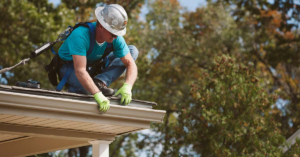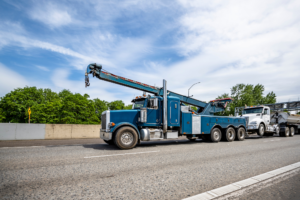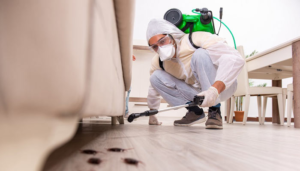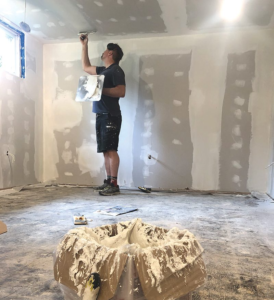An experienced lawyer can help you recover the compensation you need and deserve. They will work with experts, including accident reconstruction specialists, to support your case.
Photographic and video evidence from the accident scene, witness statements, medical records, and police reports will all be useful. They can also provide an educated estimate of your case’s value. Contact Maryland Accident Lawyer now!

Insurance coverage is a legal contract between the insured and the insurer, wherein the latter pays the insured a fixed sum of money in case of unforeseen incidents such as a car accident. It can cover medical expenses, property damage, and other losses from an accident. The amount paid by the insurance company is usually less than the total value of the loss incurred.
In New York, the state mandates all drivers to have personal injury protection (PIP) which covers a policyholder’s medical expenses in a no-fault accident, regardless of who is at fault. It also covers a limited amount of lost wages, up to 80% of the policyholder’s salary capped at $2,000 per month and other reasonable expenses associated with an accident. Additionally, the no-fault PIP provides a death benefit of $2,000.
Liability insurance covers bodily injury and property damage to other people, up to the policy limits. In New York, the minimum liability insurance required is $10,000 for property damage and $25,000 for bodily injury per person in one accident. Underinsured and uninsured motorist coverage, or UM/UIM, covers your losses when you are involved in an accident with an uninsured driver or a hit-and-run accident. UM/UIM insurance is available through your own auto insurance.
When dealing with insurance companies, an experienced NYC car accident lawyer can negotiate for fair compensation based on the extent of your injuries and damages. They can also assist with determining the maximum claim value based on various factors, including the extent of your injuries and the impact on your life.
If an insurance company does not provide you with the compensation you need, your attorney can file a lawsuit on your behalf. The lawsuit can seek compensation for your medical expenses, lost wages, property damage, and pain and suffering.
In cases of hit-and-run accidents, your attorney can help you find and identify the at-fault driver. They can also investigate possible witness reports and search for footage from any surveillance cameras that may have captured the accident scene. They can then file a civil lawsuit against the driver, seeking fair compensation for your damages.
Damages
In civil cases, the goal is to make the victim whole again in the aftermath of an injury caused by another person’s negligence or wrongful act. This is accomplished through compensation awarded to the injured plaintiff, which is called “damages.” The most common types of damages include special and general damages. Special damages are tangible expenses that can be backed up with bills and other documentation, while general damages are less concrete and more subjective.
Examples of special damages include costs related to medical treatment, out-of-pocket expenses, and the repair or replacement of property. The amount of damages awarded will vary based on the severity and impact of the injury, as demonstrated by medical records, expert testimonies, and personal diaries kept by the injured individual.
General damages are more difficult to quantify, but a good lawyer will work to ensure that they are not overlooked in the claim process. These include compensation for pain and suffering, emotional distress, and loss of enjoyment of life. Compensation for these non-tangible losses will usually be determined based on the severity and duration of the injury, as well as its impact on the injured party’s lifestyle, hobbies, and ability to interact with others.
The amount of damages that are awarded will typically also take into account the age of the plaintiff and how long they can reasonably expect to live with their injury. This is especially important in permanent injuries and fatal accident claims.
A good car accident attorney will be able to provide an accurate estimate of the value of your case during an initial consultation. During this session, they will evaluate the facts of your case, identify potential liable parties, and gather information about how your injury occurred. They will also provide an evaluation of the damages that you could potentially be entitled to, including medical expenses and other costs.
A good car accident lawyer will work on a contingency fee basis, meaning they only get paid when they win your case. This helps to align their interests with yours, ensuring that they are working hard to secure a successful result for your case.
Expert Witnesses
When you hear the term “expert witness” in the news, you likely think of a medical specialist testifying in a high-profile malpractice case or a DNA expert in a sensational murder trial. But you may not know that experts are also an integral part of personal injury cases, especially those involving catastrophic injuries. They bring specialized knowledge and expertise to clarify complex issues, establish liability, and ensure victims receive fair compensation for their losses.
Generally speaking, an expert is someone who has the education, skills, and experience to provide professional opinions or insights that add value to your car accident case. This can include medical professionals who can explain the severity of your injuries and how they will impact your future quality of life, engineering experts who can evaluate structural damage or vehicle defects, and economic specialists who can quantify the financial impacts of your injury.
One of the most important roles an expert can play in your case is to explain what happened when no eyewitnesses are available. Experts can use evidence like skid marks, vehicle damage, and witness statements to recreate the scene of the crash, establishing how it occurred. They can also provide insight into the cause of the crash, assessing factors like speed, road conditions, and driving habits.
Another key role an expert can play is to link your injuries with the crash. This can help your lawyer build a stronger case for damages by explaining how the crash caused them. For example, a medical expert can testify about the severity of your injuries and their long-term impact. They can also provide insights into future medical treatments and the need for ongoing care, such as home modifications, assistive devices, and medication.
Finally, an expert can help your attorney calculate the amount of damages you deserve. They can analyze your medical expenses, lost wages, and other financial losses to determine the appropriate amount of compensation. This can make it harder for the insurance company to dispute your claim or find a way to lower your settlement. A skilled personal injury attorney knows how to identify the best experts for your case and assess their qualifications, including credentials, education, and professional affiliations. They also take into consideration how well they can communicate complex concepts to a non-expert audience.
Negotiation
A knowledgeable and experienced NYC car accident lawyer can assist you in negotiating the best settlement for your case. They can help you build a strong negotiation strategy that aligns with your goals and case circumstances, such as by working closely with medical professionals to accurately assess damages and establish a reasonable claim value. They also know how to effectively communicate with insurance companies, which can improve your chances of obtaining a fair and adequate resolution.
An effective negotiating strategy is crucial in car accident cases, especially those involving serious injuries and costly losses. It is important to consider all of your current and future expenses, including medical treatments, ongoing rehabilitation, permanent impairments, and loss of earning capacity.
Your attorney can work with expert witnesses, such as medical professionals or law enforcement experts, to assess the extent of your accident-related damages. A comprehensive accounting can strengthen your claim’s value and compel an insurer to settle in your favor.
Once your attorney has gathered and organized the relevant evidence, they can prepare a demand letter to send to the insurer or at-fault party. The demand letter outlines your injuries and damages, as well as a proposed settlement amount. The insurer may accept your demand, deny it, or counteroffer. The back-and-forth negotiations can last several weeks or a few months before you reach an agreement.
A successful negotiation process involves compromise and flexibility on both sides. For example, an insurance company may offer a lower settlement amount than what you believe to be your claim’s total value in order to save time and money. However, you should never agree to an initial lowball offer without discussing it with your lawyer first.
In many cases, the negotiation process will resolve your accident-related issues through an out-of-court settlement or alternative dispute resolution (ADR). An attorney who has a proven track record and a solid reputation can provide insight into the potential outcome of your case and help you pursue the most favorable outcome. They can also connect you with a network of professional connections, such as other attorneys and legal experts, which can be beneficial in pursuing your case or advocating for your rights in court.








